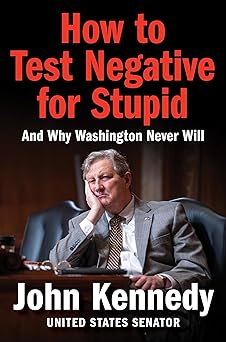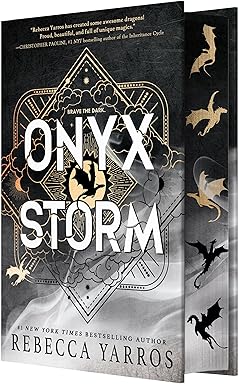
Overview & Structure
I Am Giorgia: My Roots, My Principles is the English-language edition of the memoir by Giorgia Meloni, translated (in part) by Sylvia Notini and published by Skyhorse. The book runs about 288 pages, and aims to give readers a personal, reflective account of Meloni’s life, values, and political and emotional development.
Meloni frames the memoir not merely as an autobiography but as a statement of identity and principle. She positions herself as a person who has too often been spoken about by others, rather than allowed to speak for herself. Through a mixture of personal recollection, family narrative, reflections on faith and politics, and cultural references, she traces how her early years formed her convictions and prepared her for public life.
The structure is broadly chronological, but interspersed with moments of thematic reflection — on motherhood, identity, faith, and what she views as the tensions of Italian and European politics. The memoir does not confine itself to a “rise-to-power” story; it also attempts to lay out a moral and ideological portrait.
What Works Well: Strengths
1. Personal Voice & Vulnerability
One of the strong elements of the book is Meloni’s willingness to expose emotional vulnerabilities and to narrate personal scars. She writes of her relationship with her mother, her sister, her grandparents, and also of the absence of her father. She recounts episodes of bullying and of being judged on appearance (especially weight, looks) during adolescence. These revelations — while selective — humanize a figure often seen only in political caricature. The emotional backbone of the memoir gives it narrative weight and helps the political persona feel less distant.
2. Clarity of Conviction
Meloni is quite clear about what she believes. She does not shy away from controversial claims or provocative stances. Throughout the memoir she presents her worldview in uncompromising terms: about the primacy of family, of tradition, of sovereignty, and of moral anchors (particularly faith). This coherence (or consistency) of ideological voice may appeal to readers seeking more than a bland or diluted political memoir.
3. Cultural & Pop-Culture Resonances
The memoir is peppered with references to music, literature, pop culture, and even television shows, which serve both to lighten the tone and to reveal Meloni’s manner of thinking. She speaks of listening to Michael Jackson to learn English, or using Tolkien references, or quoting contemporary culture. These touches help situate the text not only in the political realm but in everyday life.
4. Narrative of Overcoming
Meloni crafts a narrative of self-transformation: a “bullied, ordinary girl” from a modest background in Rome, who, through perseverance and conviction, becomes a figure on the national stage. Such a story possesses a classic upward arc, and for many readers it is compelling as a tale of resilience, grit, and moral self-assertion.
What Is More Problematic: Critiques & Omissions
1. Selective Memory & Omitted Context
A major critique is that Meloni’s account is selective. While she speaks candidly about many things, there are significant political and historical issues she largely bypasses or minimizes. For instance, her early association with the Movimento Sociale Italiano (MSI), a post-fascist party in Italy, and the ideological baggage that entails, is not fully confronted. Critics note that she “sidesteps the party’s fascist roots” and does not deeply reckon with that legacy. The memoir adopts an outsider posture vis-à-vis the political establishment, yet conveniently omits or softens parts of her own political genealogy.
She frames her narrative largely as one of defiance against elites, but much less as one of internal dissent, ideological struggle, or reckoning with extremism. For readers who expect a more self-critical or historically grounded reckoning, the omissions may feel glaring.
2. Tension Between Persona & Substance
While Meloni’s personality comes across strongly, in many passages the memoir leans more toward myth-making than granular policy or governance reflection. There is less on the internal workings of government, trade-offs, or detailed political strategy than one might hope from a political memoir by a sitting prime minister. In other words, the political content sometimes lags behind the rhetorical posture.
Some readers may come away wishing for more substantive engagement — more about how she conceives of statecraft, the balancing of political alliances, or the challenges of governing in a fractious coalition environment. The memoir is more about “why I believe” than “how I govern.”
3. Polarizing Tone and Us vs. Them Framing
The style of the book often sets up a sharp opposition between “us” (the people, the rooted, the faithful) and “them” (the elites, the cosmopolitan, the technocrats). This binary tone can lend itself to polemic more than nuance. Critics have observed that Meloni frequently casts conservative values as under siege by a monolithic, dismissive elite. While that tension is genuine in many political debates, the rhetoric occasionally sacrifices complexity for dramatization.
4. Emotional Emphasis Over Analytical Depth
Because the memoir invests so much in emotional narrative and personal history, the analytic or interpretive sections sometimes feel thinner in comparison. Complex topics — immigration, European sovereignty, the varying pressures on national identity — get touched upon, but often in broad strokes rather than in meticulously argued chapters. For those expecting a deeply reasoned policy treatise, the book may feel wanting.
Notable Themes & Motifs
Identity & Belonging
Meloni returns often to her identity as a woman, mother, Italian, Christian. These are not just biographical descriptors but foundational claims. She argues that modern politics has too often stripped identity of its substance, turning democratic citizens into abstract units rather than persons rooted in communities.
Faith & Moral Order
Faith is a central pillar in her worldview. She speaks of religion not as a private matter but as a guiding principle for social cohesion and moral anchor. She views many modern ideologies — secular or liberal — as eroding moral norms and cultural continuity.
Roots, Continuity & Memory
She regards roots (family, regional tradition, historical memory) as critical to a stable society. In her narrative, the dislocated individual in a transnational technocratic world is vulnerable. Thus, her memoir is partly a defense of rootedness — genealogical, cultural, spatial — against what she sees as de-rooting forces.
Resistance to Elites & Populist Undertones
Throughout, there is a posture of resistance: elites are dismissive, distant, condescending; she positions herself as speaking “from below,” as someone outsiders did not expect to succeed. That anti-elite rhetoric is a classic populist idiom. At times, it gives the book its sharp edge; at others, it underwrites the risk of oversimplification.
Readability & Style
The prose is accessible, direct, and occasionally emphatic. Meloni uses anecdote and emotional narrative more than dense policy exegesis. The book moves relatively quickly, aided by interludes of reflection and cultural references. Some readers may find the rhetorical flourishes or occasional hyperbole distracting; others may appreciate the clarity and urgency of her voice.
The translated edition — as all translations must — sometimes smooths over linguistic texture, but the emotional register remains intact. The memoir doesn’t read as a dry or academic text; it is more of a political-literary hybrid.
Audience & Impact
This book is unlikely to convert staunch opponents of Meloni’s politics — it instead crystallizes her brand for supporters and for international observers wanting insight into her moral, psychological, and ideological foundations. For admirers, it offers confirmation: a personal backstory aligned with the convictions she champions. For skeptics, it offers material — both rhetorical and narrative — to critique and engage with.
Its impact may lie less in opening new intellectual terrain and more in giving voice to a figure often caricatured in Western media. It invites readers to see her as more than a political label — as a human who believes deeply (and sometimes contestably).
Verdict
I Am Giorgia: My Roots, My Principles is a striking and evocative political memoir. It succeeds best as a portrait of self — a mixture of confessional storytelling, ideological declaration, and moral posture. Its emotional core and clarity of conviction are compelling.
Yet it is limited by its selective memory, by occasional rhetorical simplifications, and by a relative lack of deep analytical or policy detail. Readers hoping for a richly reasoned political account or a granular treatment of governance may find the book wanting in places.
In sum: for those interested in the personal side of contemporary European politics, in identity, and in the moral dimensions of public life, Meloni’s memoir is a valuable read — vivid, forceful, and unapologetic. But it should also be read critically, with awareness of what is emphasized and what is glossed over.











